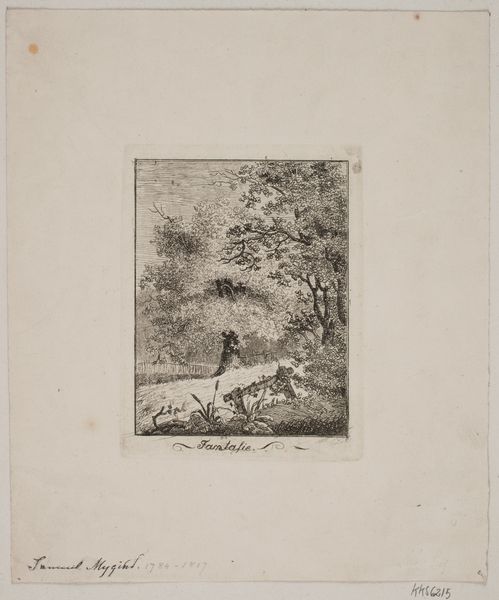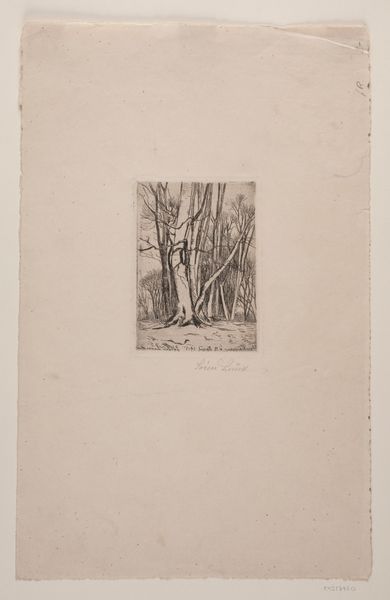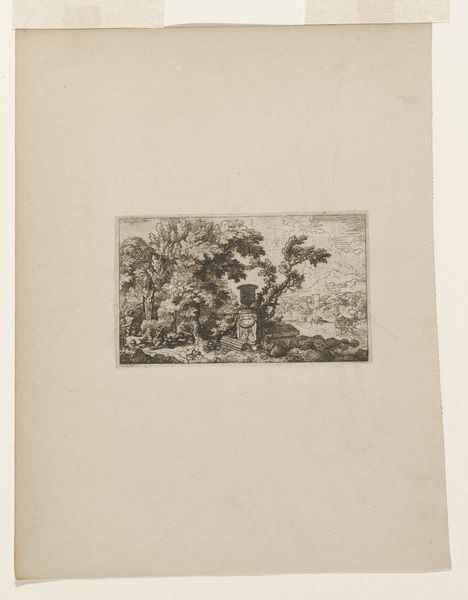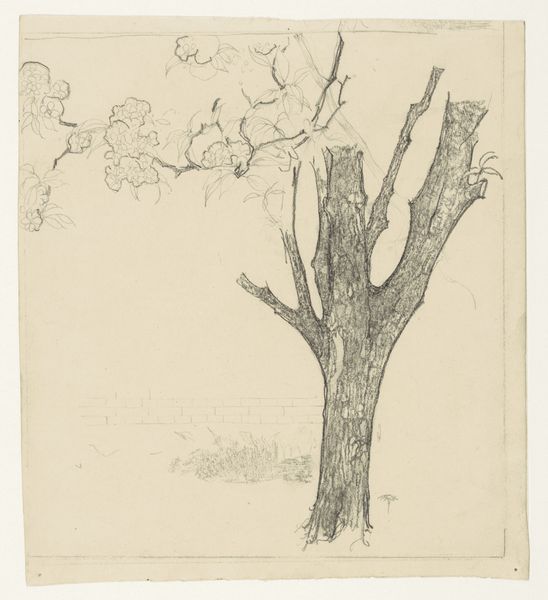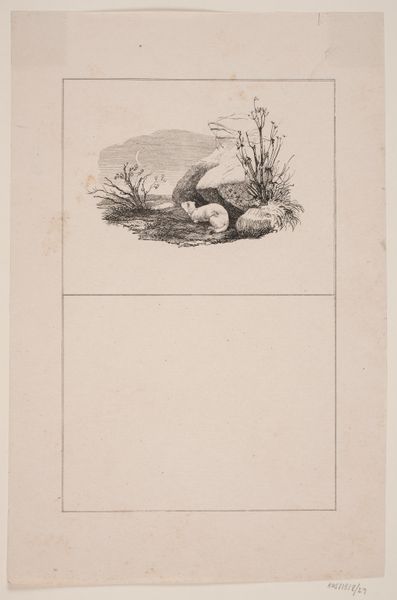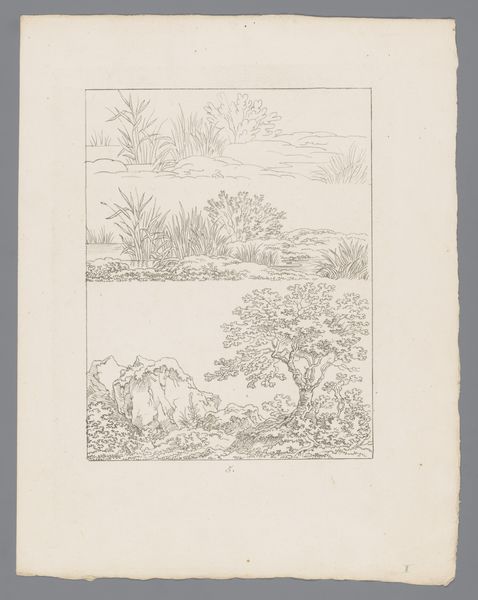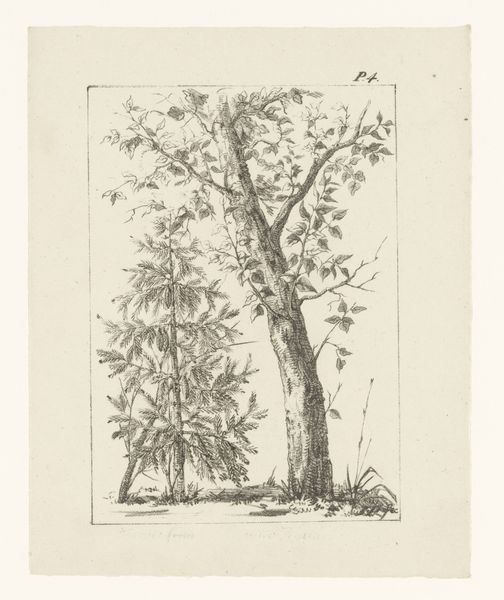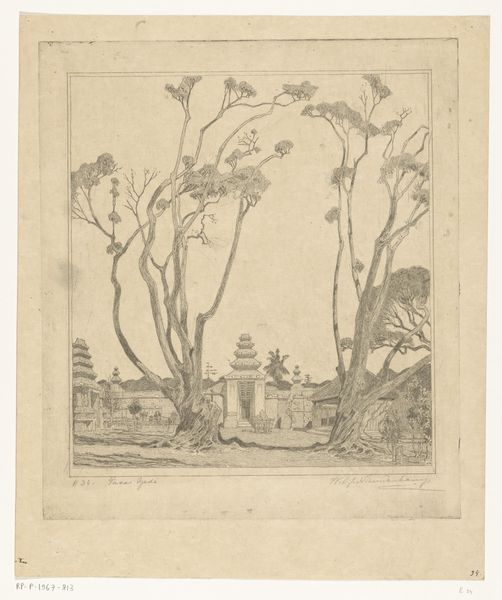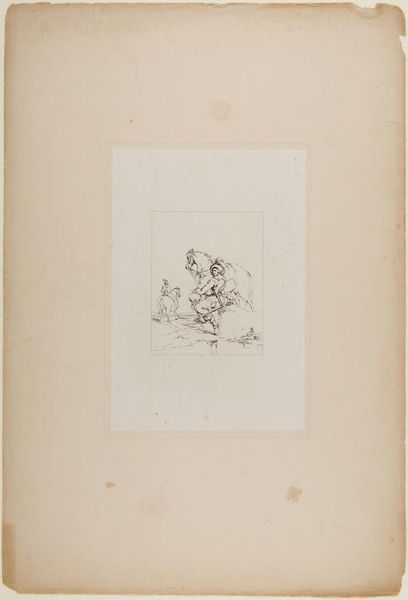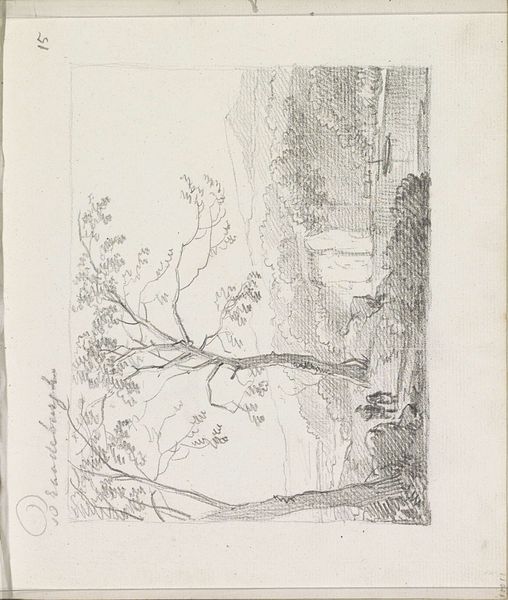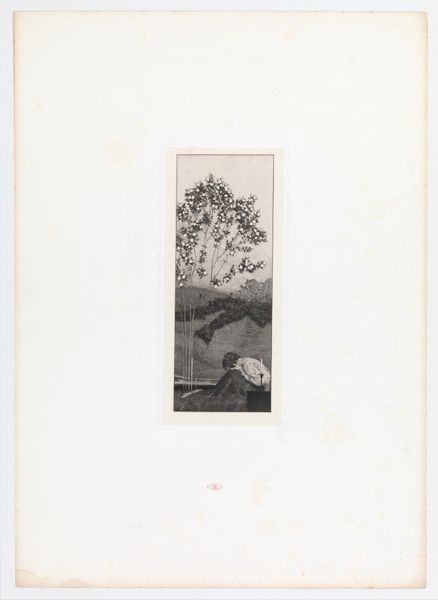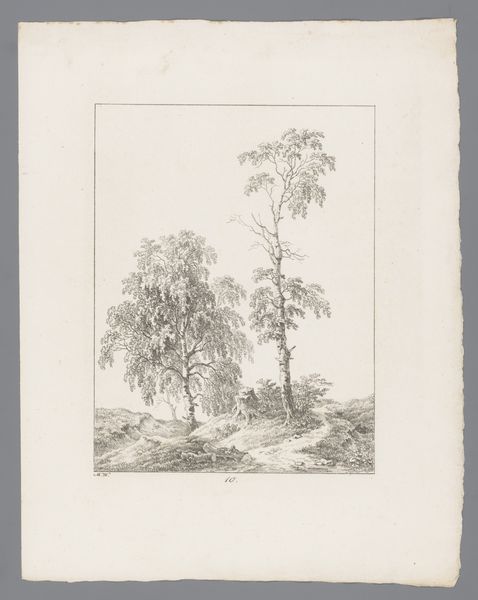
drawing, lithograph, print, etching, paper
#
drawing
#
lithograph
# print
#
etching
#
landscape
#
etching
#
paper
#
realism
Dimensions: 259 mm (height) x 173 mm (width) (bladmaal)
Curator: Welcome. Here we see "Hjorten," or "The Deer," an 1845 print by Adolph Kittendorff. It seems to be a lithograph or perhaps an etching. What's your take on it initially? Editor: It strikes me as delightfully unrestrained, even joyous. Look at that bounding deer! The light touch of the artist makes it seem so effortless, full of life and playful energy. Curator: Well, if we look a little deeper into the social history, the rural subject matter becomes important. During the mid-19th century, Denmark, like other European nations, was experiencing significant shifts in population from rural to urban settings. This image presents a romanticised vision of country life that served to counter this rapid urbanization, focusing on the purity of the animal in contrast with societal progress. Editor: That’s a fair point. The political is so tied to even an apparently naturalistic and naive scene like this. And maybe there’s something there to the seemingly artless technique. Look at how much open space exists and how that foregrounding can put that bounding dear forward as the centerpiece. It really amplifies that sense of unbridled spirit you pointed out before. Maybe this is not as naïve or realistic as one thinks? Curator: Exactly! Think about it also within the context of gender roles and the broader societal framework. Agriculture and livestock played a role in defining work patterns in the period, particularly its distribution between men and women. "The Deer" challenges conventional hierarchies with its image of freedom, not really alluding to a role within this framework. It presents instead something to be admired, a representation outside those ties. Editor: So you're reading it as subversive, pushing against a kind of socio-economic framework from its time? I wonder about how different viewers might read that at the time, compared to what we project onto it now, today. Curator: That distance and its context are everything, I think. A lens we always need to acknowledge when we’re looking at artworks like this! Editor: Fascinating, thank you. Now, I'm looking at it and that sense of unbridled spirit I mentioned at first is not at odds, necessarily, with what you bring in the political element that gives it such additional weight and heft!
Comments
No comments
Be the first to comment and join the conversation on the ultimate creative platform.
